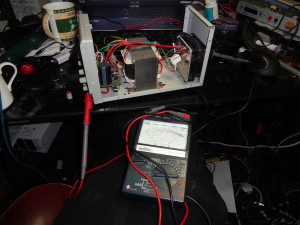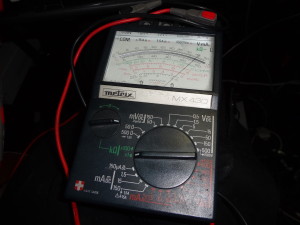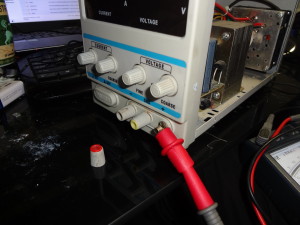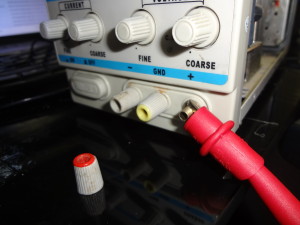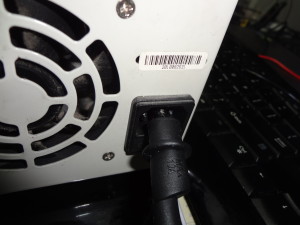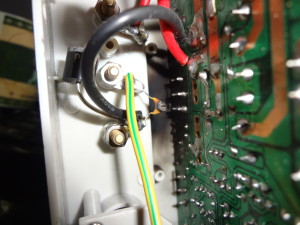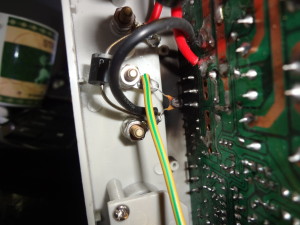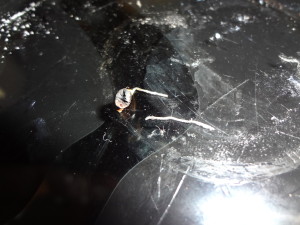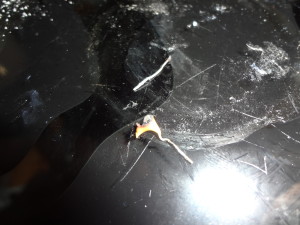Hello all Electronic Noob Blog viewers.
Today i was doing calibration of DDM 235 made by Sinclair Multimeter – quite vintage 🙂
I plug it to my bench power supply, witch floating ground (insulated from earth).
I made simple repair and after finishing calibration of DC, Resistance, Current i went to AC voltage.
I decide to quick measure AC voltage in outlet (230V 50Hz) and compare result to my analog meter to decide is it need any adjust.
I’m always take caution while doing witch live voltage and have my own power on method.
First i make sure that device under test is disconnected, i made adjustments, turn power on on device panel, take few steps back and plug device into power strip witch another switch … from few meter i switch power strip, i something smoke i hit switch again… that’s save me many times from breathing smoke from cooking capacitors, hitting via starting motors etc. and today save me from being hit in my face via semiconductor parts… that’s might sound funny but i think no-one want to be hit in the eye…
About DM235 i will write another post… but find why it’s exploded ?
It exploded because electric found way from power outlet -> threw multimeter -> threw power supply back to grid network closing circuit…
I do a quick check grid “hot wire” -> bulb 100W -> isolated power supply output = full bright light 🙂
Of course that should not happen because my PSU is floating ground… and that’s mean it should be separated from grid threw transformer…. but it is not…
After opening power-supply i found blown “ceramic capacitor” with was connected between GROUND and NEGATIVE post terminal…. blown ceramic capacitor have full short patch… and that’s the way how current pass threw DDM to grid…
After removing blown capacitor my PSU start being floating again 🙂
Take big lesson from me… if your PSU is floating and You want use it as floating… check if there is capacitor across terminals… because when apply AC voltage it will blow and will damage Your device if it need to be isolated…

